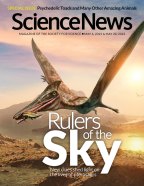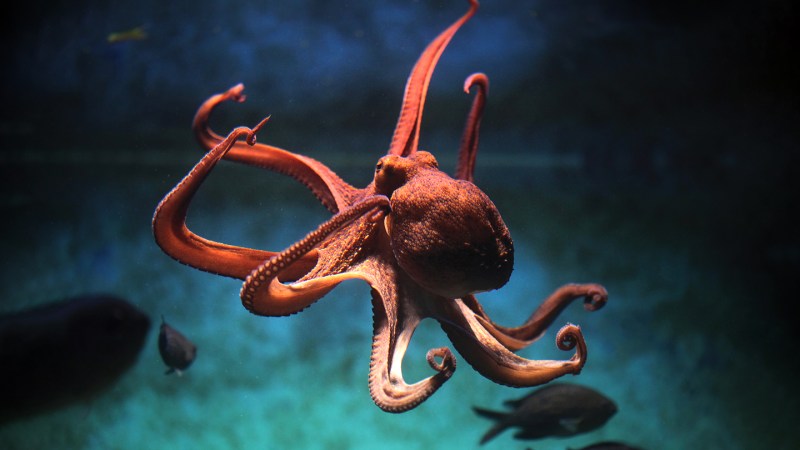Readers ask about Saturn’s icy rings, transparent fish and more
- More than 2 years ago

Icy hot
Ice particles from Saturn’s rings are falling into the planet’s atmosphere. In part because the particles vaporize, energy is released, heating up and making the sky glow at ultraviolet wavelengths, Ken Croswell reported in “Saturn’s icy rings may bring the heat” (SN: 5/6/23 & 5/20/23, p. 18).
Some readers asked how energy could be released given that energy is typically consumed during vaporization.
Vaporizing water does require energy, Croswell says, but other processes are at play. Collisions between falling ice particles and atmospheric gas deposit heat energy into the air from friction. Ultraviolet radiation from the sun also breaks up water molecules, creating free-range “hot” hydrogen atoms that raise the atmosphere’s temperature. Together, all of these processes result in a net influx of energy into Saturn’s atmosphere, Croswell says.
See-through muscles
Microscopic banded structures in the muscles of ghost catfish separate light passing through the fish’s body into different wavelengths, giving the creature its iridescence, McKenzie Prillaman reported in “How a transparent fish turns rainbow” (SN: 5/6/23 & 5/20/23, p. 48).
Reader Jeffrey Goodis asked how the muscles can be transparent.
How transparent a material is depends on two factors, says physicist Qibin Zhao of the Shanghai Jiao Tong University. The material’s molecular structure determines how much light bends when passing through. And the way that light interacts with the surrounding environment helps determine the level of transparency.
Like many other kinds of fish, the ghost catfish has muscles with a molecular structure that is orderly but loosely packed, which readily lets light through. But ghost catfish muscles are so thin that light bends very little when it goes from water to muscle and back to water. The muscles of other fish would also be transparent if they were as thin as those of the ghost catfish, Zhao says.
Marvels of the sea
Octopuses (one shown below) and squid masterfully edit RNA while leaving DNA intact. Such modifications could explain the creatures’ intelligence and behavioral flexibility, Tina Hesman Saey reported in “Kraken the code” (SN: 5/6/23 & 5/20/23, p. 34). “Octopuses never fail to amaze us with their intelligence and adaptability,” marveled Twitter user @NanacySharma. “It’s incredible how they navigate the world with their unique abilities. Let’s continue to appreciate and protect these fascinating creatures.”

Bear necessities
Low levels of a clotting protein called HSP47, which is typically found in platelets and cells that make up connective tissues, may keep hibernating bears free of blood clots. The finding could make way for new anticlotting treatments that balance preventing clots and causing too much bleeding, Erin Garcia de Jesús reported in “Hibernating bears avoid blood clots” (SN: 5/6/23 & 5/20/23, p. 16).
Reader Jeffery Lowers wondered what the potential downsides of medicines that target HSP47 might be.
Stopping HSP47 from doing its job would affect the ability of platelets in the blood to quickly stop bleeding in the event of a cut or an injury. Such a risk would probably not be a top concern for hibernating animals or people who are in a coma. But it does mean that future medicines that target this protein may not work for every patient.
Take a person with a bone fracture, says Marjory Brooks, a veterinarian and comparative hematologist at Cornell University. For such a patient, platelet function is crucial because platelets help repair broken bones by stifling any bleeds and healing wounds, Brooks says.
Correction
“Jupiter’s lightning is a lot like Earth’s” incorrectly stated that a lightning bolt lurches forward at an average of hundreds of thousands of meters per second (SN: 6/17/23, p. 14). It lurches at an average of tens of thousands of meters per second.